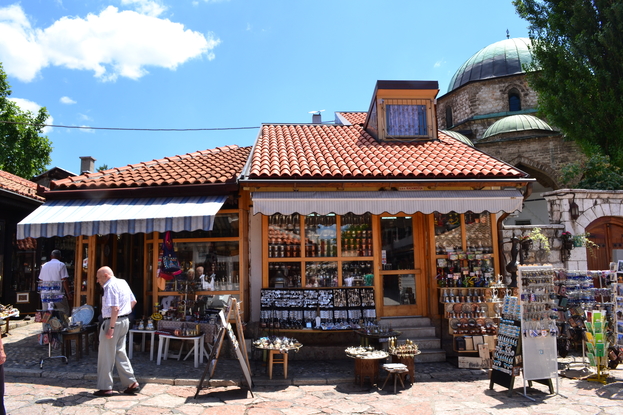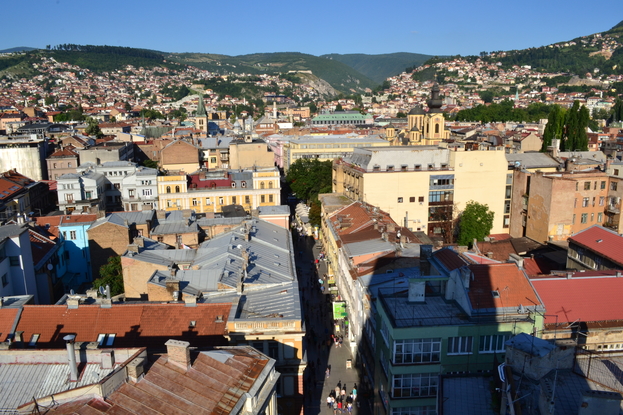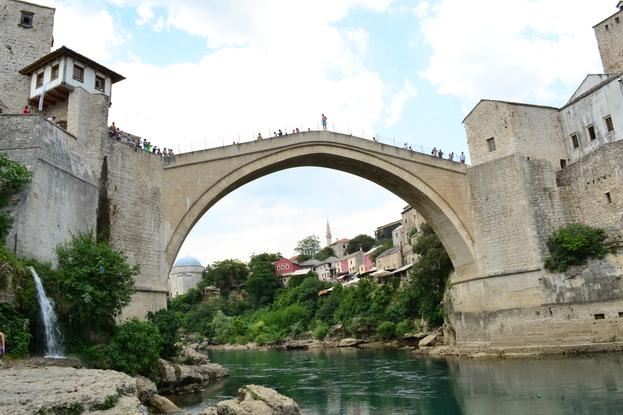22.07.2013. ‘My father lost both his legs when he stepped on an active landmine a few years after the war‘, our tour guide said, almost nonchalantly, as though such conversations are common place in daily life Sarajevo. She is a stunningly beautiful woman; svelte, blonde and articulate- the sort of person who will turn heads on the streets. The glaring sun shines through the car window; she put on her sunglasses, and we continued our drive toward the Tunnel of Hope.
I spot the strength in her eyes. ‘Many people said they remembered much of 1992- 1995. I don’t. As a child back then, I think I must have been traumatised‘, she remarked. She must be roughly the same age as me. I can’t even begin to fathom how different our lives must have been back then.
Welcome to Sarajevo.
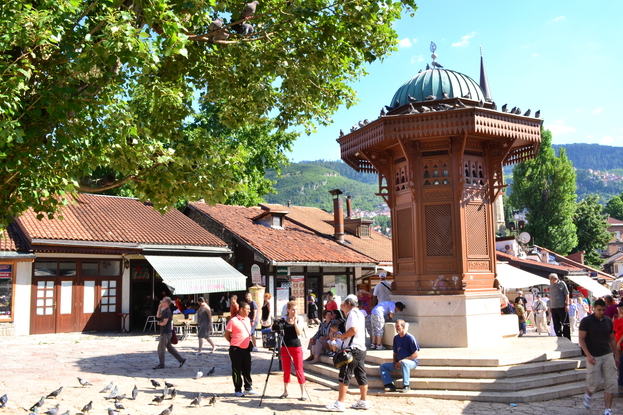
Centre of old town Sarajevo with Ottoman drinking fountain
The capital of Bosnia and Herzegovina has a troubled past, falling siege for over 4 months during the Bosnian War from 1992 to 1995, resulting in over 11,000 casualties, the longest in modern warfare history. The country is ethnically diverse, with its population comprising largely of Bosniaks, Serbs and Croats, a fact quite evident on its streets- it isn’t rare to see a Catholic Church, a Muslim Mosque and an Orthodox Church situated metres from each other. It is however, the same diversity that could have be attributed to the war, when Tito died and Yugoslavia fell into chaos. Coming from a country like Singapore, where religious and ethnic harmony has long been weaved into the fabric of our lives, I felt blessed.
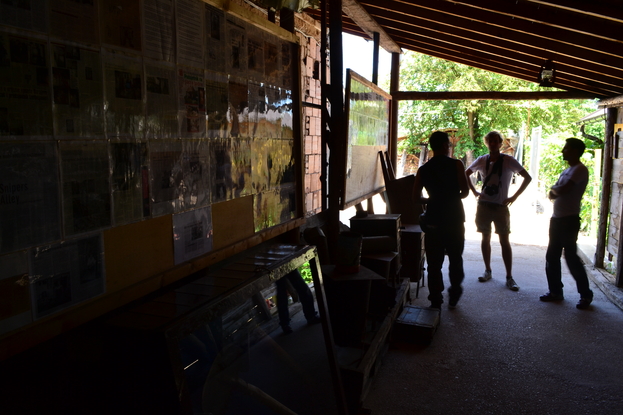
Exhibitions at the Tunnel of Hope, a 800m passageway between Sarajevo and the outside world
I arrived at Sarajevo from the city of Mostar, a beautiful ancient city most famous for its Ottoman bridge (Stari Most). The bridge was destroyed by Bosnian Croats forces during the Bosniak- Croat war, which added another layer of complexity to the violent situation.
Walking down the streets of Sarajevo today, one will struggle to find traces of the war. Streets are rebuilt and people have moved on strongly. Its people, possibly the most beautiful I have the fortune of meeting in Europe, seemed almost grateful at the presence of foreign visitors. Each word of ‘thank you’ was met with the most enthusiastic of ‘You are welcome!’ and the flashiest of smiles, be it store owners on tourist streets or the lonely security guard who was slightly taken aback when I stopped in front of his post for directions. I fell in love with Bosnia over the 5 days and have a strong inkling this will not be the last time I get to see this beautiful country.
I chanced upon a local book fare and my curiosity was drawn to this quirky hand-drawn map of the country, written in Bosnian, and illustrating what I can only imagine to be local quirks and tidbits. A man, noticing my presence, immediately sprang in front of me with a version of the same map, but in English. When quickly clarifying that I am not buying, he was quick to diffuse, encouraging me to have a look at it.
‘These maps are drawn by me, and they are my pride!‘, he beamed. Indeed they are, and in more ways than one.
